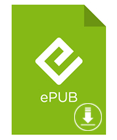Abstract
Digital technology plays a vital role in empowering services management and analytics. Digital transformation and emerging technologies create new service management, like forensic science and anti-counterfeit companies and agencies opportunities that differ from traditional strategies. The new advanced technologies enable them to generate a large amount of diverse digital counterfeit data. However, such data diversity and heterogeneity are liable to hinder counterfeit analytics. Some professionals assert a clear need for effective means of synchronizing, aggregating, integrating, and synthesizing large-scale data sets according to predefined decision rules and research objectives. Against this backdrop, the article introduces a novel model of counterfeit management and data integration—Counterfeit Digital Twins (CoDT). A Digital Twin (DT) is a virtual replica of a physical object, process, human, or service used to mimic, replicate, and predict its physical counterpart’s real-world operation. The CoDT framework offers a DT designed specifically for smart counterfeit detection services. The conceptual framework presented is based on the notion of value co-creation as articulated by service-dominant logic (S-D logic) and its DART model. The paper provides significant theoretical and practical contributions and important avenues for future research emanating from the conceptual framework.
Keywords: Digital Twins (DTs); AI; Counterfeit brands/products/services; Extended reality; Forensic science
Introduction
A recent multifaceted trend in science and technology, both in academia and industry, is digital transformation. This transformation has caught pace also in forensic science [1-3] owing to cost-effective, miniaturized sensors and cutting-edge technologies such as the Internet of Things (IoT), Machine Learning (ML), Augmented Reality (AR), Artificial Intelligence (AI), Big Data Analytics (BDA), robotics, blockchain, quantum computing, cloud and fog computing, and metaverse. Indeed, the active development of virtual worlds, united under the common term ‘metaverse’, leads to the creation of digital counterparts that merge with reality, thereby furnishing novel forms of social interaction, business, and production [4,5]. To provide immersive smart services, the metaverse relies on various operations, namely, data collection, transmission, manipulation, and generation, as well as a plethora of devices, such as mobile phones, cameras, helmets, and edge nodes. More importantly, the metaverse depends on a diverse set of technological advancements to build a real-world metaverse. While smartphones, tablets, laptops, and other technological devices have become an integral part of the service environment, they are used not only in customers’ everyday activities but also by service providers as tools to interact with stakeholders [6,7].
All these data-generating breakthroughs provide huge amounts of readily available data and information to counterfeit detection services and agencies. However, such data growth has resulted in several major challenges for anti-counterfeit decision-making. One of the major pitfalls in service monitors arises from the difficulty of aggregating, integrating, and synchronizing the innumerable advanced monitoring methods and technologies from independent, autonomous data-generating devices, models, technologies, methods, surveys, and software, which are creating the large and time-dependent models and data sets [8,9]. Most previous counterfeit studies have tested detection services and analyzed results from a single or limited perspective [10-12]. Little efforts have been made to aggregate and integrate models and data from different counterfeit perspectives to explore performance [13]. Date complexity, diversity, and heterogeneity may impede the development of counterfeit service monitoring and decision-making [14]. Thus, data integration and synchronization are crucial for counterfeit service performance monitoring [3]. It has analytical implications spanning multiple spheres including conceptualization, illustration, convergent validation (triangulation), development of analytic density, and decision-making. Therefore, in the increasingly complex counterfeit landscape, a clear need arises for a unified model, and more integrated and analytical data-driven systems to support anti-counterfeit decisions [12]. Moreover, data fusion allows the integration of human experience into the process [7]. We propose, therefore, that Digital Twin (DT) can help to mitigate these problematic issues, as it harnesses the power of advanced technologies such as the IoT, big data, data analytics, AI, and machine learning to inform and enhance decision-making and operational efficiency.
In acknowledgment, DTs were included three years in a row (2019-2022) among Gartner’s Top 10 Strategic Technology Trends [15]. DT for counterfeit services is an analytical tool that has been relatively overlooked in the current technological frenzy. DT is defined by the DT Consortium as a “virtual representation of real-world entities and processes, synchronized at a specified frequency and fidelity [24]. Thus, AI-enabled DT can reduce guesswork by allowing providers to create digital replicas of detection services, employed at various points in the detection process, to help highlight strong points, demonstrate concepts, reveal potential challenges, and minimize decision errors, with results that match or surpass human capacity [16-18]. Thus, a DT comprises a virtual version of a physical and mental system enabled by data fusion technologies to effortlessly and bidirectionally synchronize, integrate, communicate, and update data, models, and software, between real and virtual services. This transformative technology undeniably holds the potential to revolutionize critical areas of counterfeit research, generate vibrant research areas, and raise important theoretical and practical questions. Detection agencies can leverage the power of AI-enabled DT for numerous tasks, particularly, those related to monitoring detection performance, predicting demands, and gauging stakeholders’ attitudes, behavior, and emotions. DT can be applied to a wide variety of design and testing functions, yet, surprisingly, it has received little attention from counterfeit science hitherto. The convergence of technologies in DT opens new avenues for delivering high-quality data in all aspects of detection studies using Counterfeit DT (CoDT). Indeed, it can create a highly engaging and personalized experience and provide intelligent solutions that eliminate major barriers in detection research, while enhancing the predictive power of data-based counterfeit monitors [10,11]. Because DTs can achieve value cocreation between service providers and customers [19], they hold enormous promise in terms of optimizing detection and reaction services. This value co-creation can be transformed into a smart advisor for every stakeholder [4]. Additionally, DT can facilitate remote collaboration among scientists and researchers, thus accelerating the pace of scientific discovery.
Paper Objectives
The present paper has been motivated by a clear need to discover and explore aggregating and integrating systems capable of harnessing the large amount, of heterogeneous, complex, and time-dependent data generated by cutting-edge technologies for anti-counterfeit management and analytics. Further, it aims to investigate how a CoDT) can provide value co-creation and new opportunities for digitally enabled smart counterfeit services. Inspired by recent successful DT applications in various smart tangible and intangible ecosystems, such as the use of DTs of Paris 2024 Olympic venues, which assisted in games planning, athlete safety, audience and consumption monitoring, broadcast enhancement, as well as operational efficiency and sustainability. These various aspects were visualized in state-of-the-art Venue Twin software, which enabled others to be viewed by security and other stakeholder anywhere and at any time [20]. In the present article, we suggest future DT applications in smart counterfeit services ecosystems by introducing a conceptual framework as a guide for research and application. As already noted, one major problem with counterfeit research and services is that they are undergoing a continual increase in fragmented data and knowledge with little or no integration and thus risk being overwhelmed, confused, and misled by ever-growing piecemeal evidence [21]. Therefore, as aforementioned, we propose CoDT as an integrated platform that facilitates integration, aggregation, interoperability, description, prediction, and/or visualization of one or more characteristics of a service as it performs within a realworld business environment. Advancing counterfeit management by leveraging advanced computational technologies [4] involves a strategic process that requires collaboration, innovation, market insight, integration, and careful planning to develop compelling content that captivates stakeholders and achieves detection and anti-counterfeit operation success.
Digital Twin: A Brief Review
“Digital Twin is at the forefront of the industry 4.0 revolution facilitated through advanced data analytics and the Internet of Things (IoT) connectivity” [22]. A DT is a model that is as close as possible to a real asset (product or service) without it being that asset. It shares information with the asset in terms of its respective inputs and outputs. In this way, the asset and its twin work in concert, where the twin can inform, control, assist, and enhance the original. Current DTs typically employ data analytics technologies associated with advanced technologies such as IoT, AT, and ML, plus a variety of modeling that have recently emerged [23]. The National Academies of Sciences, Engineering, and Medicine (NASEM) recently published a report entitled “Foundational Research Gaps and Future Directions for Digital Twins” [24], which highlights DT’s unique contributions and significance to knowledge transmission and scientific advancement. DT technology is part of the advent of new digital technologies that support digital transformation by providing capabilities to enable new business models and decision support systems. Indeed, DT is at the core of disruptive innovations in diverse areas [25]. It establishes the link between a physical entity and its virtual counterpart enabling simulation, analysis, and control. DTs interact with physical assets both by controlling real assets and predicting their future states and by calibrating models using data from the physical asset. The implementation process follows different steps including aggregating and integrating smart components into new or existing assets. Thus, DT refers to the full-element reconstruction and digitized mapping of an asset’s performance in an integrated multiphysics, multiscale, hyperrealistic, dynamic probability simulation model, which can be used for simulating, monitoring, diagnosing, predicting, and controlling the formation process, state, and behavior of real assets in the real world [26].
Similarly, CoDT is a virtual representation of a real counterfeit service. CoDT technology has the potential to reveal the values and patterns within real detection services, as well as the problems they may face, and to predict these entities’ behavior when confronted by possible economic, technological, natural, or social crises [27]. Visual effects in CoDT communication make them more attractive and efficient. Therefore, service providers can improve their services to offer better visual effects and userfriendly designs. Service designs can be simulated using CoDTs to gauge outcomes without the disruption or uncertainty of doing so in the real world. When integrated with technologies such as AI, ML, and Marketing IoT (MIoT), CoDTs can spot patterns, predict future problems or scenarios, and recognize opportunities in ways that inform better and smarter services, planning, and decision-making.
Notably, in a recent study, Korepin et al. [9] have shown empirically that companies and organizations applying DTs enhanced their operational efficiency, as evidenced by a high correlation between expenses on DTs and company revenues. Such findings are important, as CoDT provides an opportunity to deliver new value propositions for stakeholders, and gain a deeper understanding of the actual service performance. This builds upon the assessment of service value co-creation supported by DT technologies [27].
The Counterfeit Market
In today’s branded world and luxury hype, many brand-named assets not only satisfy basic needs but also serve as an expression of customers’ taste and style, leading them to pay premium prices. This trend and the proliferation of imitation technologies make counterfeiting a relatively easy task and a tempting avenue for scammers. Counterfeit assets, which include fakes, clones, and refurbished and remanufactured commodities, are circulating in markets around the world [11]. The proliferation of counterfeit assets is a serious problem that affects legitimate businesses, consumers, and the economy as a whole. Counterfeiting is a deceptive practice that exploits consumer trust. For example, Louis Vuitton is one of the world-renowned luxury brands, and its iconic LV pattern is targeted by many counterfeiters. Like counterfeit products, counterfeit services refer to fraudulent or fake services that imitate genuine services, typically to deceive customers or make illegal profits. They are prevalent across industries and sectors and assume different forms. One example is tech support scams, in which malicious actors employ computer pop-up alerts claiming a virus or security issue, thus prompting users to call for help, at which point the scammer asks for payment or remote access [12]. Other examples include bogus repair services (for cars, appliances, electronics) that either fail to fix the issue or replace parts unnecessarily, often using counterfeit parts, fake online stores or services that either do not fulfill orders or deliver counterfeit goods, fraudulent investment schemes or financial advice services, and healthcare services that provide fake medical treatments, refer clients to unlicensed practitioners, or deliver counterfeit medications. Detecting counterfeit assets and methods can be challenging for a variety of reasons. With the advent of advanced technologies such as deepfakes and AI-generated content, counterfeit methods can create convincing and realistic marketing materials. Scammers use sophisticated methods such as phishing, fake support calls, and malware to make their services seem legitimate. Some counterfeits impersonate or closely mimic well-known brands or legitimate service providers, making it difficult for customers to differentiate, and use technical jargon to impress and appear as experts. Scammers also operate across different jurisdictions, making it difficult for law enforcement and regulatory bodies to track and prosecute them. They quickly adapt their tactics and methods in response to new regulations, technologies, or public awareness campaigns, and continuously innovate and develop new schemes to exploit emerging trends or technologies, staying ahead of detection efforts. In many cases, customers might not immediately recognize they received a counterfeit asset until a problem arises, which could be much later.
Counterfeit Detection and Services
The direct and indirect damages fakes inflict are costly to companies, retailers, governments, and customers. For rightsholders and legitimate businesses, as well as those whose employment depends on them, infringements of intellectual property rights (IPR), and in particular commercial-scale counterfeiting and piracy, cause significant financial losses, damage to reputation, and disincentive to innovation. They also harm customers’ financial, physical, and mental health [13], government tax revenues, and even the environment. Direct annual worldwide financial damages alone are estimated to exceed 200 billion dollars [14]. Thus, it is not surprising that companies are exerting much effort to combat counterfeits, while also enlisting the services of counterfeit detection agencies such as Scribos (https://www.scribos.com/anti-counterfeitingsolutions/ stop-counterfeiting); Visua (https://visua.com/usecase/ counterfeit-detection-with-visual-aid); and Integra (https:// www.integra-tech.com/counterfeit-detection), which employ a variety of methods and sophisticated technologies to combat counterfeits and authenticate products. Visua, for example, offers a novel blockchain-based counterfeit detection platform that can be used in the post-supply chain, while Integra Technologies provides a full suite of counterfeit semiconductor detection methods. Other agencies furnish “forensic-type” systems designed to assist companies in determining IC authenticity. Their services range from simple marking and X-ray inspection to full AC/DC/ functional testing across the entire durability and operating ranges.
While methods of detecting counterfeit assets abound, they are not foolproof and may be costly and time-consuming. For example, a QR code can be copied from a genuine product and placed on a fake product. AI, meanwhile, uses CNN and machine learning, which demand heavy computational power. Finally, security labels, a commonly used technique, are susceptible to damage and deterioration, as they are exposed to environmental elements and handled during shipping and retail procedures [3], thus compromising their reliability over time. Most anticounterfeiting efforts employ one or more of the authentication methods and technologies without the ability to work together and share data in real-time, while it is clear that a successful campaign requires a more integrated and multifaceted effort [11,12]. The fragmented approach diminishes the capacity to establish a thorough and clear understanding of the problem. As Song, Qin, and Liu [12] point out, “Solutions offering complete protection are rare, in many areas some combination of technologies can significantly delay or reduce the magnitude of counterfeiting” (p.104). This limitation impairs real-time product monitoring and tracking, thereby hindering counterfeiting detection and resolution. Addressing these issues requires a coordinated effort from consumers, businesses, regulators, and law enforcement to stay informed, vigilant, and proactive in combating counterfeit services. Anti-counterfeiting strategies must combine traditional methods with cutting-edge technology to protect against everchanging counterfeiting scenarios. As Hall [28] maintains, “The technological needs resulting from these challenges and the increasing sophistication of the illicit manufacturers should be the impetus for innovations or the combination of technologies” (p.73). Thus, the need for sophisticated and unified anticounterfeiting technologies is ever-growing as the practices of counterfeiters become increasingly advanced.
CoDT, as a primary data fusion technology, can aggregate multiple anti-counterfeiting measures and technologies to more effectively detect counterfeiting attempts in real-time and provide recommendations to stakeholders. By creating a virtual replica of a genuine asset, CoDT offers a secure and transparent means of tracking and monitoring the entire asset history and verifying the authenticity of assets. Using technologies such as CoDT-enabled blockchain, RFID, IT, machine learning, etc., which enable the formation of a transparent, interconnected, and intelligent system for monitoring and authentication, can markedly enhance the effectiveness of anti-counterfeiting methods. Thus, by leveraging CoDT capabilities, companies and agencies can significantly reduce the risk of counterfeit assets entering the market, protect their brand reputation, and ensure the safety and satisfaction of their customers. CoDT can help identify anomalies or inconsistencies in asset performance, usage, or location that might indicate a counterfeit asset. Counterfeit assets can be compared to their DTs to identify differences in materials, components, or manufacturing processes. Each product can be associated with a unique digital signature or ID within its CoDT, which includes data such as product specifications, manufacturing details, and lifecycle information. CoDT scans can verify data across the product’s manufacturing and supply chain. By comparing the recorded data with actual product attributes, discrepancies can be detected. For instance, if a product claims to be from a certain batch but fails to align with the batch data in the CoDT, it can be flagged as a counterfeit. Integrating CoDTs with blockchain technology can provide an immutable ledger of transactions and changes associated with the asset, ensuring that the information is accurate and tamperproof. This makes it difficult for counterfeiters to alter the asset data. CoDTs, moreover, can automate the quality control process. By comparing a product’s physical characteristics with those of its CoDT, automated systems can detect deviations that may suggest counterfeiting. This is particularly useful in industries where precision and quality are critical, such as pharmaceuticals or electronics. Furthermore, CoDT technology allows for immediate and precise tracking, enabling prompt and precise actions against instances of counterfeiting. If there is a suspicion of a counterfeit asset, service providers and other stakeholders can trace its source and identify its location in the supply chain. This not only facilitates detection and swift removal of counterfeit assets but also serves as a deterrent for potential counterfeiters. In recent years, benchmark technology has shifted towards forensic techniques and systems that carry unique authenticated information along the distribution line. CoDTs can store and analyze barcodes, 2D data matrix codes, and Radio Frequency Identification (RFID) tags, thus allowing for instantaneous remote authentication, which makes it much harder for counterfeit assets to enter the market [3,28].
The integration and interoperability of CoDT technology offers a holistic understanding of the real service leading to improved decision-making, efficiency gains, and the ability to proactively address counterfeit challenges in real-time. In the future, customers will be able to access the CoDTs of an asset via mobile applications or online platform services to verify its authenticity. By scanning a product’s QR code or NFC tag, stakeholders can view the product’s CoDTs information, ensuring they are purchasing a genuine item. Manufacturers then can share digital twin data with customs and law enforcement agencies to assist in the detection of counterfeit goods at borders and ports. CoDT data also can serve as evidence in legal proceedings against counterfeiters. Considering the high financial and other values to all stakeholders, implementing anti-counterfeiting CoDTs seems cost-effective [13]. Finally, anti-counterfeiting service providers need to know how and where they will contribute to the value chain and develop capabilities to ensure they can deliver value [12]. Defining what mix of anti-counterfeiting services to deliver might be a process that involves both service providers and customers in value co-creation activities.
Anti-Counterfeiting Services as Value Co-Creation
By applying our CoDT conceptual framework with value cocreation in anti-counterfeiting services, companies and agencies can leverage the collective knowledge and resources of all involved stakeholders to develop more effective and innovative solutions to combat counterfeit assets, thereby enhancing overall market integrity [29]. In an anti-counterfeiting campaign, value co-creation means that the provider and its stakeholders, including customers, suppliers, distributors, and even regulatory bodies, work together to develop and implement strategies to combat counterfeit products. Using value co-creation models like the DART model [30,31] can be effective in an anti-counterfeiting campaign by fostering collaboration, transparency, and shared responsibility among various stakeholders. Value co-creation can be achieved through each of the model’s four main building blocks. First, open dialogue between anti-counterfeiting service providers and consumers can help to identify vulnerabilities, develop strategies, and share information about counterfeiting trends. This shared knowledge, in turn, enhances the service provider’s ability to detect and respond to counterfeiting activities. Second, ensuring that all relevant stakeholders have access to up-to-date information about counterfeiting trends, prevention technologies, and legal measures is critical. It is also necessary to provide access to tools that help in detecting counterfeit assets, such as authentication apps or verification systems. This shared knowledge enhances the service provider’s ability to detect and respond to counterfeiting activities. Third, identifying risks associated with counterfeiting for each stakeholder is also important. This includes understanding where counterfeit assets are most likely to enter the market and what vulnerabilities exist in the supply chain, as well as developing and implementing strategies to mitigate risks, such as strengthening supply chain security, enhancing product packaging, or improving traceability. Finally, transparency ought to be promoted in the supply chain by making information about asset origins and production processes available to consumers and stakeholders. Transparency prohibits manipulation for personal gain, establishing a fair and equal playing field for all. This can help build trust and make it easier for consumers to distinguish genuine products from counterfeits. It is also vital to establish clear and accessible mechanisms for reporting and handling and encourage more proactive involvement from stakeholders. By applying the DART model, an anti-counterfeiting campaign can build a more robust and collaborative approach to tackling counterfeiting, thus ensuring that all stakeholders are well-informed, actively engaged, and equipped to contribute to the fight against counterfeit products.
Discussion
By adopting a service-dominant logic, anti-counterfeiting service providers can build stronger customer relationships, foster trust, and create more effective anti-counterfeiting strategies. Technologies, tools, and procedures used in CoDT modeling for counterfeit asset detection include simulation software, visualization tools, and data analytics platforms. Using software tools and hardware sensors, stakeholders can create a virtual representation of their brands and monitor their performance in real time, allowing them to quickly identify any issues indicative of counterfeiting. Simulation software can test the virtual asset under different conditions and scenarios. At the same time, visualization tools can help stakeholders better understand the data their sensors collect. Subsequently, data analytics platforms can analyze this data and identify any patterns or trends indicative of counterfeiting. Overall, CoDT modeling is an effective value cocreation method [32], which holds enormous potential in terms of tackling counterfeiting and minimizing damage to stakeholders by its ability to aggregate and integrate diverse data and models.
Theoretical Implications
“Digital twins are not just a fleeting trend but an essential component of sustainable innovation” ([33] p.498). Development and utilization of CoDT requires collaboration across multiple disciplines, including marketing, logistics, consumer behavior, forensic science, data science, computer science, and domainspecific fields. Such interdisciplinary collaboration can foster innovation and knowledge exchange. Digital representations of real detection services or systems are expected to rapidly transform the counterfeit ecosystem, and their theoretical implications are vast and still being explored. CoDT challenges the traditional understanding of the relationship between physical and digital worlds, but also potentially blurs the lines between the real and the simulated, raising questions about the nature of reality and representation. By designing and creating a dynamic copy of a real entity, CoDT can introduce new properties that do not exist in the latter. For instance, as CoDTs become more sophisticated, they may be able to make decisions and take actions on their own [34]. Thus, we can expect even more profound theoretical questions to emerge about the understanding of AI and virtual space and the role of the different stakeholders in it. As Götz, Karlsson, and Yitmen [35] suggest, significant potential lies in a holistic approach to future digitization initiatives with blockchain-based DTs, and in positioning the concept as a strategic, multifunctional tool for field support applications. Meanwhile, recent advances in fog computing (FC; [36,37]) promise to shift CoDTs processing power and data storage away from centralized servers and into local networks where IoT devices and other monitors are located.
Managerial Applications
From a managerial perspective, the present conceptualization is also novel, as practitioners have only just begun to employ DT. The proposed CoDT provides a unique way to dynamically represent real anti-counterfeit services in the digital space concerning their specifications, functionalities, appearances, positions, and behaviors. When paired with technologies such as big data analytics, sensory data acquisition, AI, and ML, CoDT has the potential to realize long-term strategic benefits through realtime diagnostics and process optimization [11,38]. This will give CoDT the ability to help stakeholders make informed decisions promptly, therefore greatly reducing the costs associated with responding to unexpected future events, maintenance scheduling, and design validation. Utilizing CoDT’s integrative abilities for counterfeit management and research permits managers to discover new possibilities for optimizing processes, innovating services, and achieving sustainable growth in the age of smart counterfeit services.
Future Research
Several avenues for future research have merit. One of the most important questions to explore is how the proposed CoDT framework can be empirically tested. Similarly, a major challenge in CoDT development is the evaluation (testing) of the novelty value and effectiveness of new service ideas. Consequently, all pertinent data derived from testing should be added to the CoDT database to be used for future evaluations. Future research should focus on semantic data modeling to generate standardized CoDT data, facilitating seamless and bi-directional integration of heterogeneous data sets. Rich data models preserving high data integrity for different applications, data sets, assets, and processes should be developed rigorously. Thanks to the IoT’s capacity for acquiring large volumes of relevant counterfeit data, data fusion will also turn into evidence-driven or learning-based approaches for big data sets from classic methods such as Bayesian inference and Dempster-Shafer reasoning [15]. Also, datasets may contain noisy data points whose distributions are difficult to estimate due to various data construction approaches. This gives the anticounterfeit research community ample opportunity to develop robust algorithms that are resilient against such unpredictable noise. Finally, the topic of data privacy and ownership should be investigated, lending insight on how to integrate concepts within existing laws and sustainably develop data-enabled services for stakeholders.
In sum, in the future, researchers undoubtedly will be able to accelerate the exploitation of the CoDT concept even further. To the best of our knowledge, this is the first work on DT in counterfeit services. It is our conviction that by stepping into the future of smart services, CoDT can transform real counterfeiting services into an immersive user experience. We hope that this conceptualization and the research challenges will inspire academics to further explore this exciting topic, and thus contribute to the development of novel detection services that assist in combating counterfeits [39-42].
Statement
The authors declare no financial or other conflict of interests.
References
- Klasén L, Fock N, Forchheimer R (2024) The invisible evidence: Digital forensics as key to solving crimes in the digital age. Forensic science international 362: 112133.
- Selim A, Ali İ (2024) The Role of Digital Forensic Analysis in Modern Investigations. Journal of Emerging Computer Technologies 4(1): 1-5.
- Vepraskas, Matthew, Benjamin W, Stirgwolt (2024) A System Dynamics Approach to Building Counterfeit Avoidance Programs, Computers & Security. 139(1): 103711.
- Alimamy, Saifeddin, Timothy Jung (2024) The AR Cloud: Navigating Metaverse Augmentation Technologies for Enhanced Co-Creation of Value Within Services. Journal of Service Research 46: 1-18.
- Paul, Justin 2024) Digital Transformation: A Multidisciplinary Perspective and Future Research Agenda. International Journal of Consumer Studies 48(2).
- Götz, Caroline., Sophie Hohler, Carina Benz (2018) Towards Managing Smart Service Innovation: A Literature Review. In: Exploring Service Science, 9th International Conference, IECC 2018 Proceedings, Gerhard Satzger, Lia Patricio, Mohammed Zaki, Niklas Kühl, Eds. Springer International Publishing, United States pp. 101-111.
- LeBreton, James M (2023) Data Aggregation in Multilevel Research: Best Practice Recommendations and Tools for Moving Forward. Journal of Business and Psychology 38(2): 239-258.
- Brill, Johannes, Volker Nissen (2022) What is a Smart Service? In: Mobile Web and Intelligent Information System Lecture Notes in Computer Sciences, Springer Publishing, United States pp. 1651-1678.
- Korepin, Vadim (2024) Implementation of Digital Twins as a Tool for Increasing the Efficiency of Business Operations. Economics of Innovation and New Technology 1-16.
- Cesareo L, Bellezza S (2024) Knowledge, Morality, and the Appeal of Counterfeit Luxury Goods. Journal of The Association for Consumer Research.
- Alhosni RH, Masengu R, Tsikada C (2025) Leveraging Artificial Intelligence to Detect Counterfeit Luxury Products: A Systematic Review of Machine Learning, Natural Language Processing, and Image. AI and Machine Learning Applications in Supply Chains and Marketing 237-256.
- Song, Zhuzhu, Zhongfeng Qin, Tian-Liang Liu (2024) Implications of Counterfeiting and Differentiation on Online Knowledge Services with Suitability Upgrades. Journal of Retailing and Consumer Services 78.
- Wasnik, Kunal, Isha Sondawle, Rushikesh Wani, Namita Pulgam (2022) Detection of Counterfeit Products Using Blockchain. ITM Web of Conferences 44: 03015.
- OECD (2024) Trade in Counterfeit and Pirated Goods: Mapping the Economic Impact.
- Attaran, Sharmin, Mohsen Attaran, Bilge Gokhan Celik (2024) Digital Twins and Industrial Internet of Things: Uncovering Operational Intelligence in Industry 4.0. Decision Analytics Journal 10: 100398.
- Bala, Indu, Soumen Mondal, Dipen Bepar (2025) Digital Twins for Industry 4.0 and 5.0,” In: Artificial Intelligence for Intelligent Systems, CRC Press, United States pp.324-342.
- Barricelli, Barbara Rita (2020) Human Digital Twin for Fitness Management. IEEE Access 8: 26637-26664.
- Tao, Fei, Qinglin Qi (2019) Make More Digital Twins. Nature 573(75): 490-491.
- Barth, Linard (2023) Value Creation with Digital Twins: Application-Oriented Conceptual Framework and Case Study. Applied Sciences 13(6): 35-49.
- Hliš, Tilen, Iztok Fister, Iztok Fister Jr (2024) Digital Twins in Sport: Concepts, Taxonomies, Challenges and Practical Potentials. Expert Systems with Applications 258.
- Xu F, Shan F, Yang F, Chen T (2024) The impacts of gray products and counterfeits in the luxury industry. International Journal of Production Research 62(14): 5252-5268.
- Sharma, Angira, Edward Kosasih, Jie Zhang, Alexandra Brintrup, et al. (2022) Digital Twins: State of the Art Theory and Practice, Challenges, and Open Research Questions. Journal of Industrial Information Integration 30: 56-80.
- Attaran, Sharmin, Mohsen Attaran, Bilge Gokhan Celik (2025) Revolutionizing Agriculture Through Digital Twins,” In: Encyclopedia of Information Science and Technology, (6th Edtn), Mehdi Khosrow-Pour, ed., IGI Global. 1-14.
- National Academies of Sciences, Engineering, and Medicine (NASEM) (2024), Foundational Research Gaps and Future Directions for Digital Twins. The National Academies Press, United States.
- Ivanov, Dmitriy (2024) Conceptualisation of a 7-Element Digital Twin Framework in Supply Chain and Operations Management. International Journal of Production Research 62(6): 2220-2232.
- Ponnusamy, Vijayakumar (2025) Artificial Intelligence (AI)-Enabled Digital Twin Technology in Smart Manufacturing. In: Industry 4.0, Smart Manufacturing, and Industrial Engineering, Amit Kumar Tyagi, Shrikant Tiwari, Sayed Sayeed Ahmad, Eds., CRC Press, United States pp.248-270.
- West, Shaun, Jürg Meierhofer, Lukas Schweiger (2020) Value Propositions Enabled by Digital Twins in the Context of Servitization. Advanced Services for Sustainability and Growth 152-160.
- Hall C (2012) Technology for combating counterfeit medicine. Pathogens and global health 106(2): 73-76.
- Oh S, Shon T (2024) Digital Forensics for Analyzing Cyber Threats in the XR Technology Ecosystem within Digital Twins. Electronics 13(13): 26-53.
- Prahalad CK, Venkat Ramaswamy (2004) Co-creation Experiences: The Next Practice in Value Creation. Journal of Interactive Marketing 18(3): 5-14.
- Taghizadeh, Seyedeh (2016) Scale Development and Validation for DART Model of Value Co-creation Process on Innovation. Journal of Business & Industrial Marketing 31(1): 24-35.
- Ajmal MM, Jan A, Khan M, Hussain M, Salameh AA (2024) Exploring the Barriers and Motivators of Value Co-creation Through a Theoretical Lens of Service-Dominant Logic. Journal of Business & Industrial Marketing 39: 1174-1191.
- Stacchio L, Angeli A, Marfia G (2022) Empowering Digital Twins with Extended Reality Collaborations. Virtual Reality & Intelligent Hardware 4(6): 487-505.
- David Monek G, Fischer S (2025) Expert Twin: A Digital Twin with an Integrated Fuzzy-Based Decision-Making Module. Decision Making: Applications in Management and Engineering 8(1): 1-21.
- Götz, Christopher Santi, Patrik Karlsson, Ibrahim Yitmen (2020) Exploring Applicability, Interoperability and Integrability of Blockchain-Based Digital Twins for Asset Life Cycle Management. Smart and Sustainable Built Environment 11(3): 532-558.
- Hornik, Jacob, Matti Rachamim, Sergei Graguer (2023) Fog Computing: A Platform for Big-Data Marketing Analytics. Frontiers in Artificial Intelligence 16: 81-89.
- Hornik J (2024) Fog Computing-Based Smart Consumer Recommender Systems. Journal of Theoretical and Applied Electronic Commerce Research 19(1): 597-614.
- Becker S, Fritzsch TH, Labudde D (2024) The role of a digital twin in supporting criminal investigations-a case report about a possible abuse. Forensic Science, Medicine and Pathology 1-10.
- de Koning, Koen (2023) Digital Twins: Dynamic Model-Data Fusion for Ecology. Trends Ecol Evol 38(10): 916-926.
- Kliestik T, Lăzăroiu G (2023) Emotional State Prediction and Data Visualization Tools, Generative Artificial Intelligence and Workplace Monitoring Systems, and Wearable Sensor-based Devices in Immersive Workspaces. Analysis and Metaphysics 22: 43-61.
- Trantas A, Pileggi P (2024) Digital Twin and Foundation Models: A New Frontier. In: Proceedings of the 16th International Conference on Agents and Artificial Intelligence 3: ICAART pp. 988-994.
- Context of Industry 5.0. Robotics and Computer-Integrated Manufacturing 85: 102-124.






























